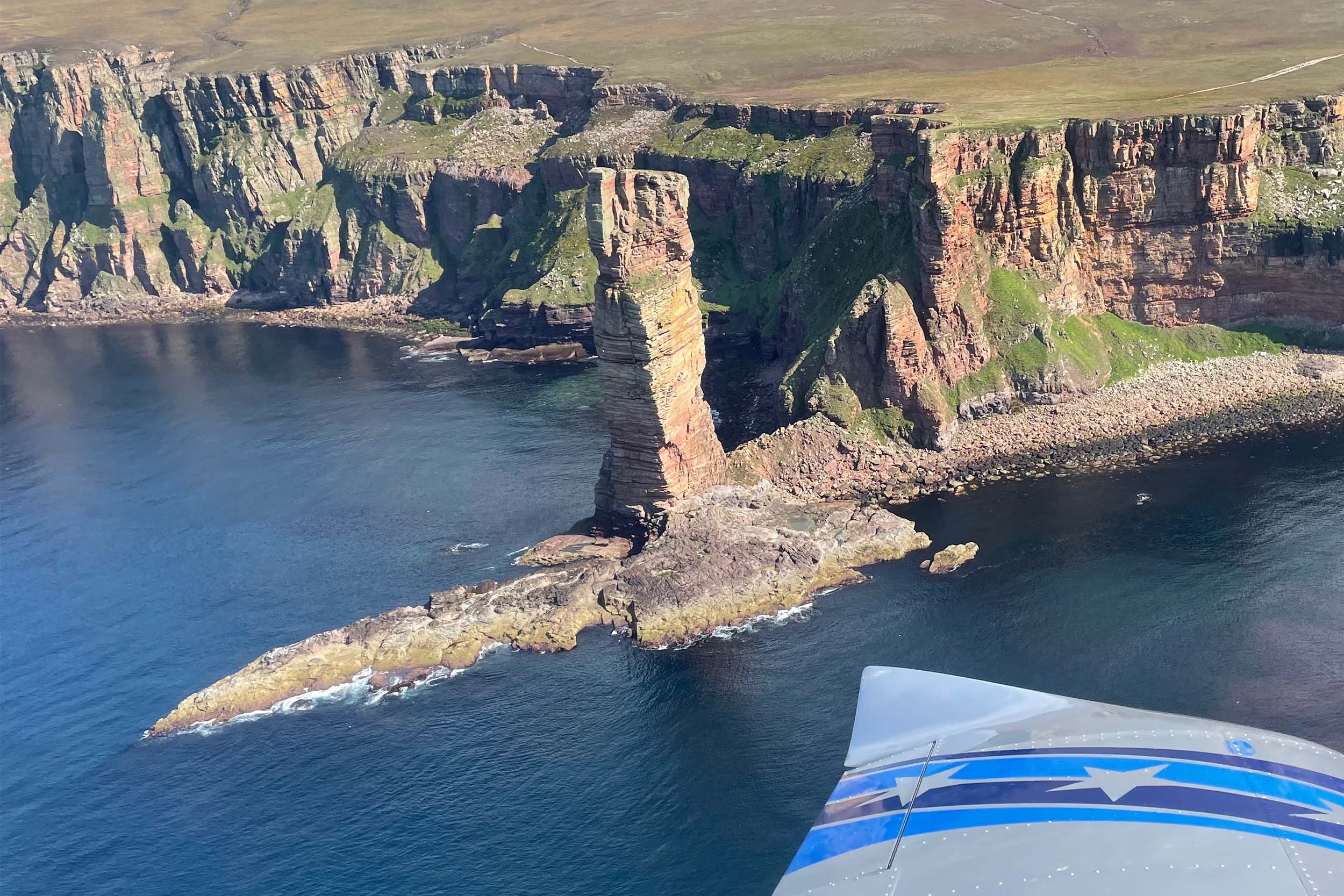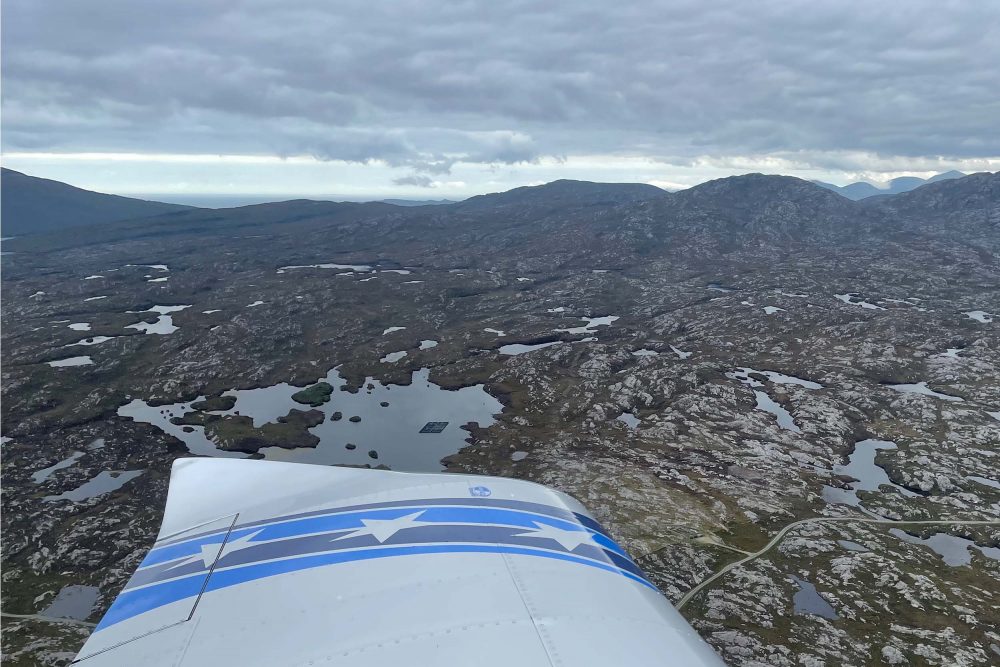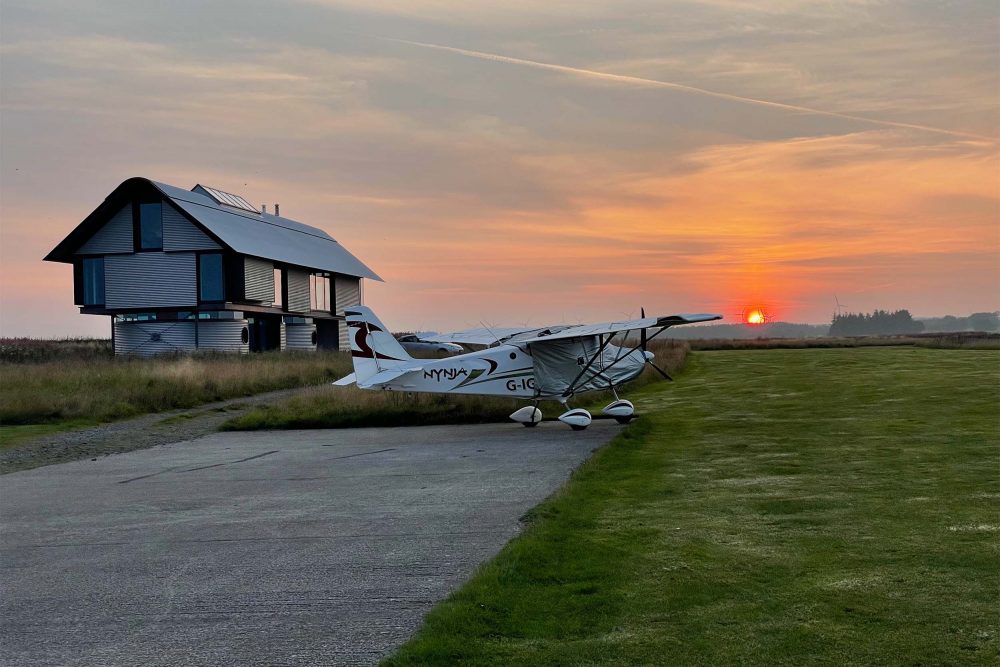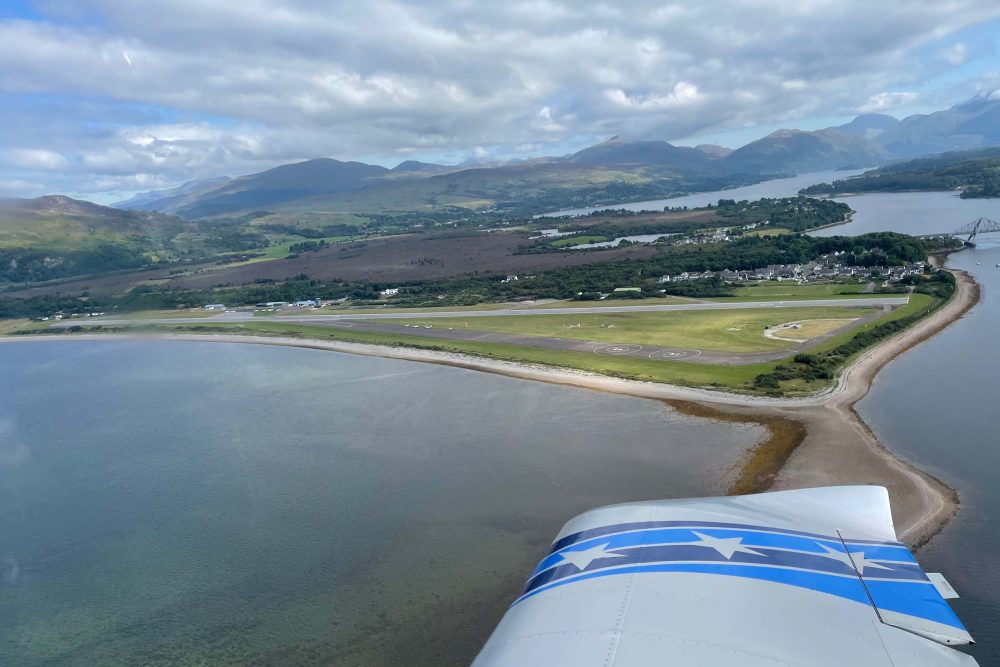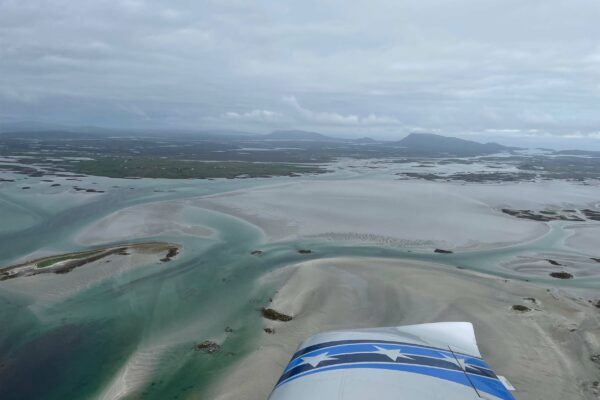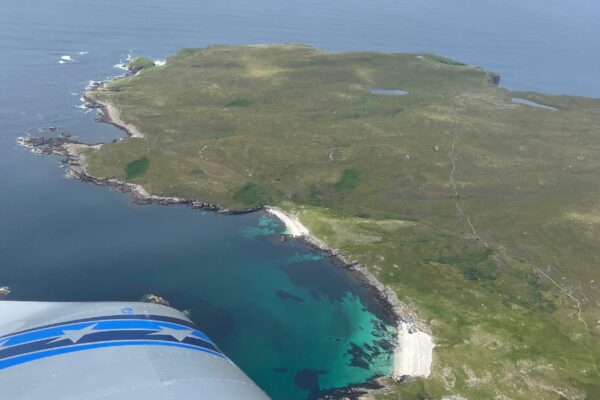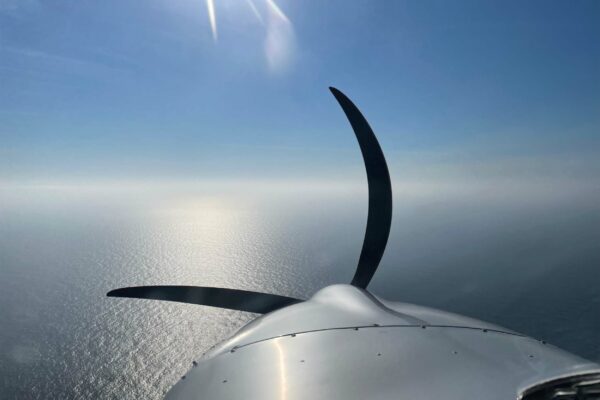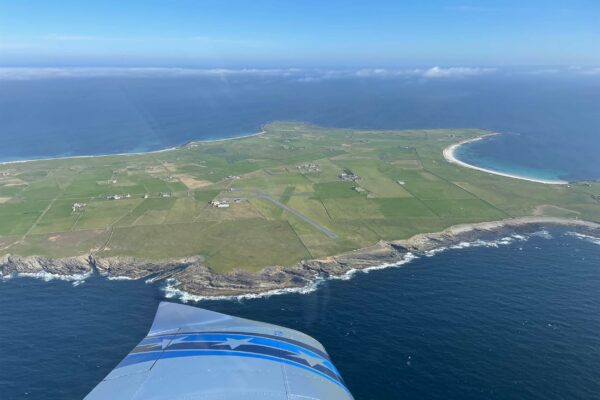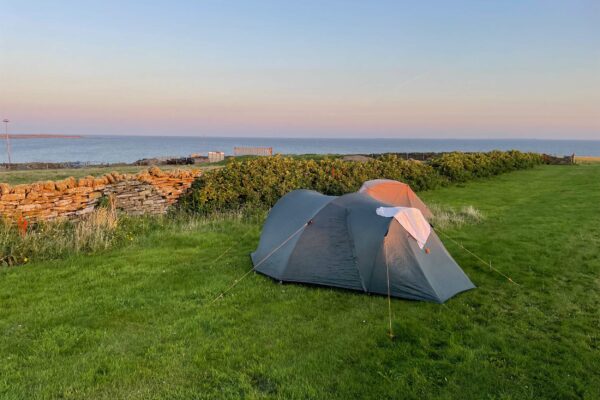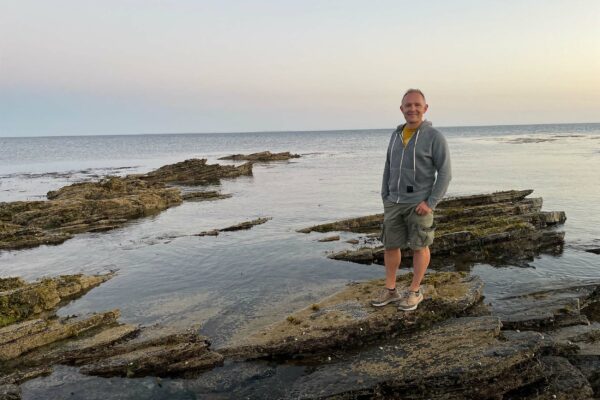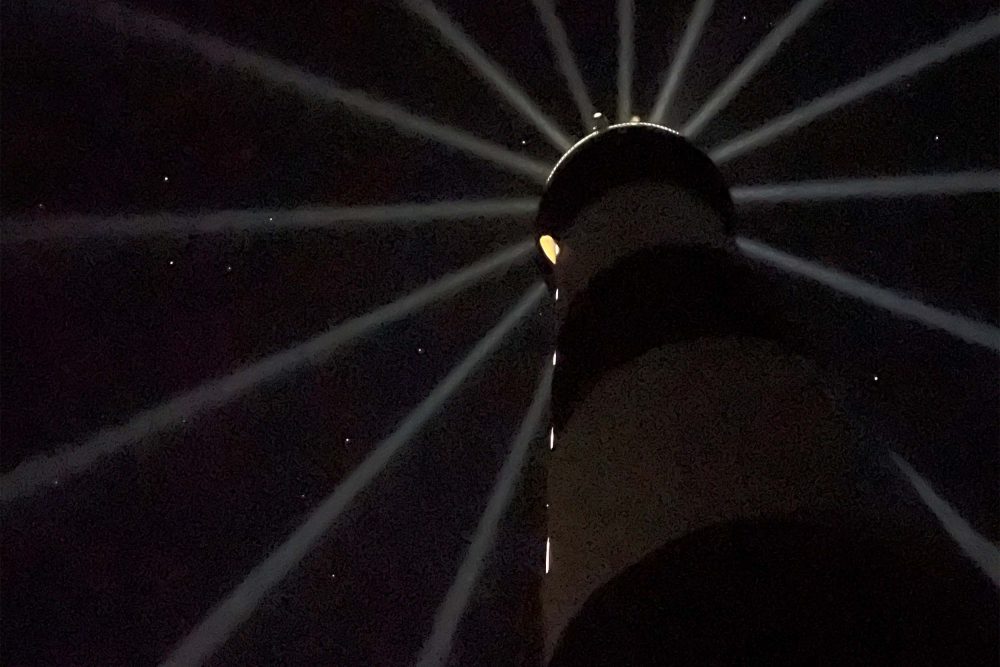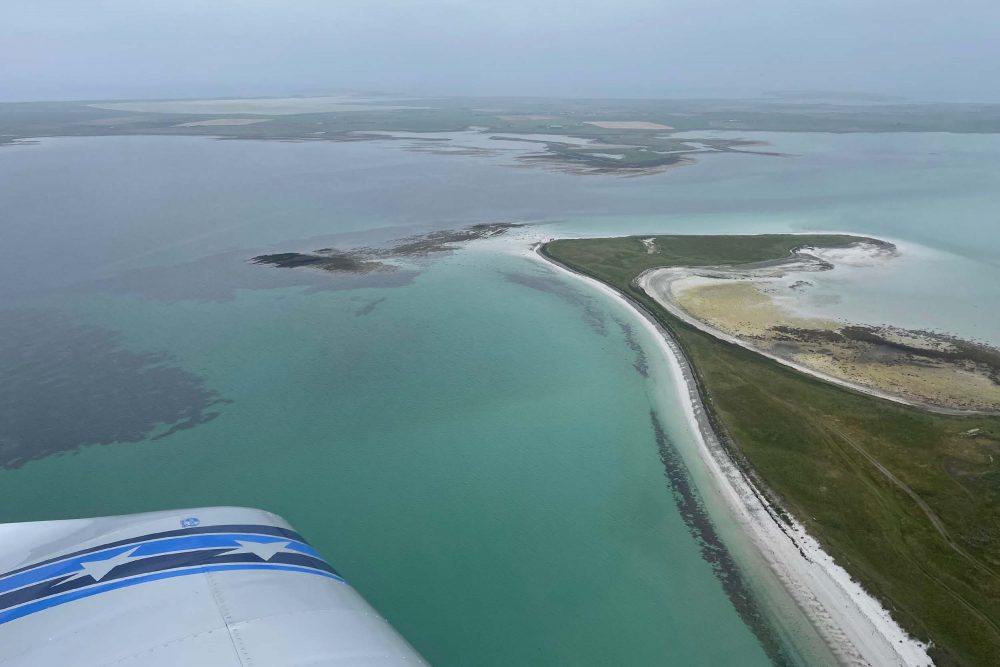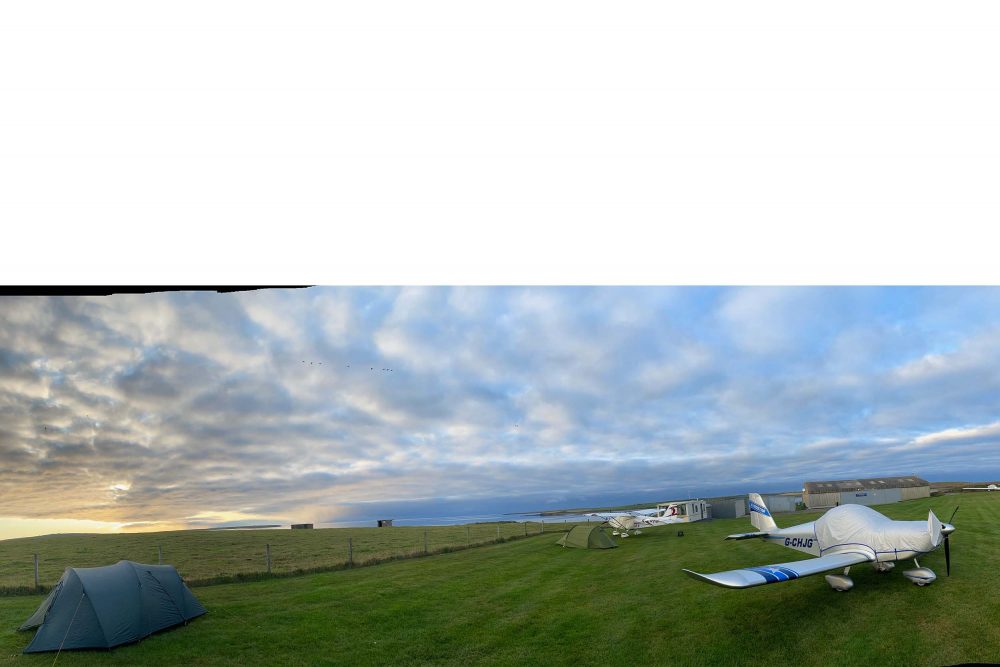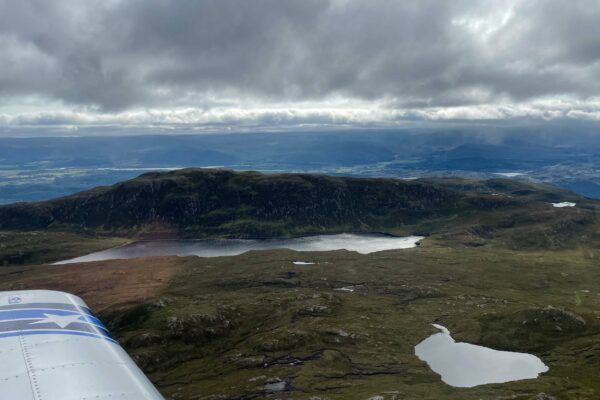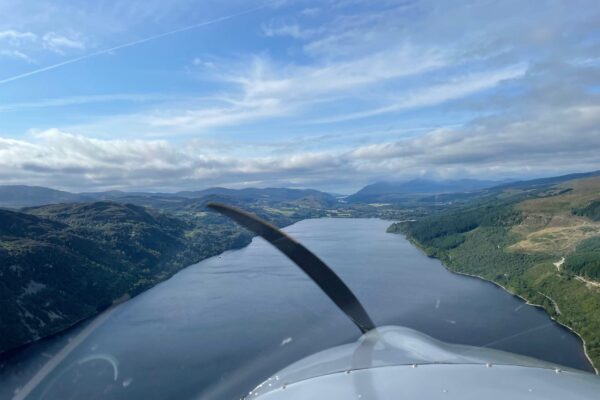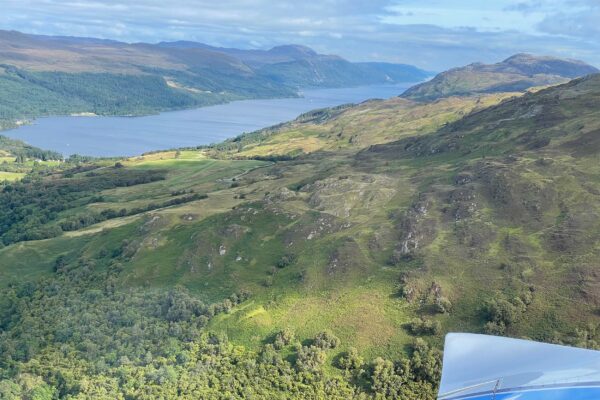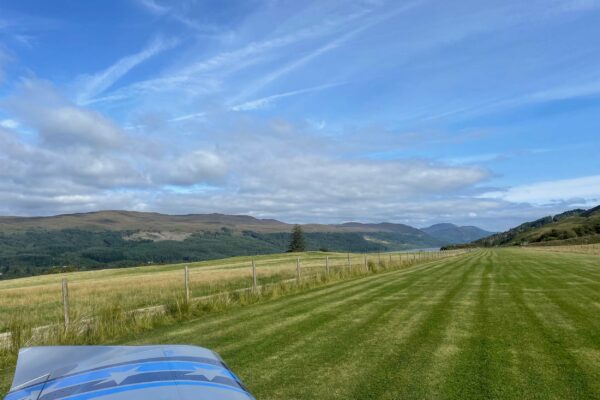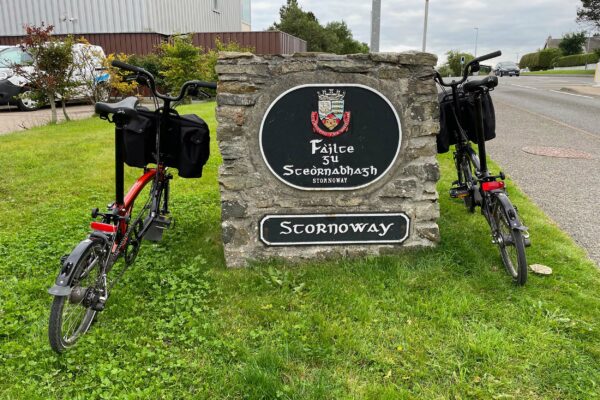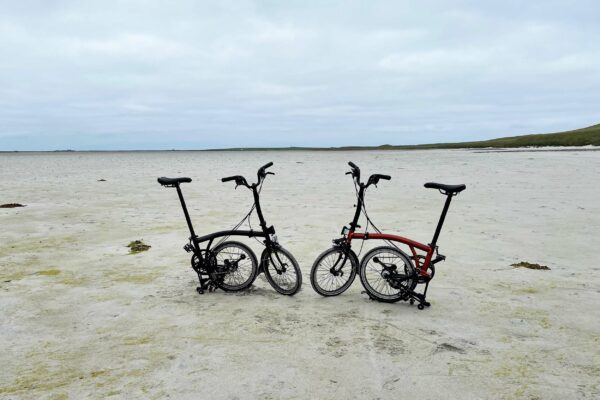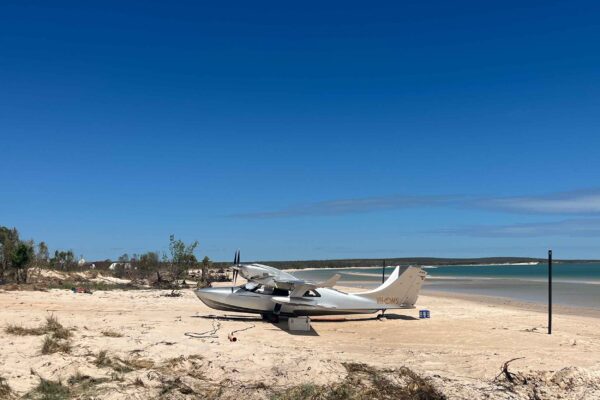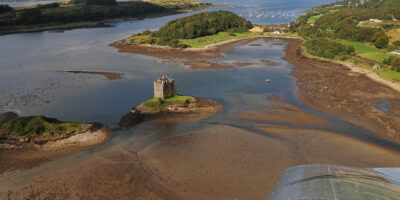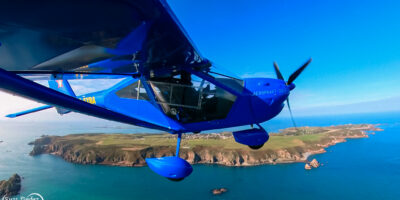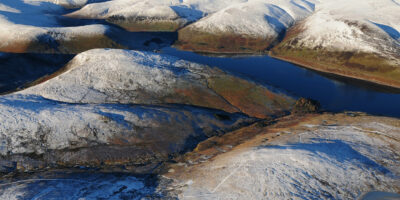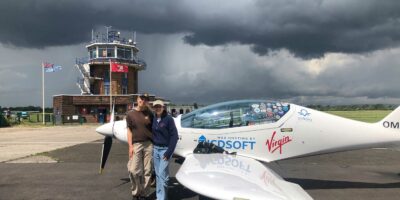Later that night, after topping up with fuel at Strathaven, from the generous Colin MacKinnon’s jerrycan supply, we biked into town for a celebratory ‘survival’ curry.
The following morning it was foggy, so we took our time packing. Then the weather radar showed it was improving slowly out to the west coast, so we climbed into the low, breaking mist, hopeful that we could make progress… but we were soon on the ground again, 37 miles and 25 minutes further on at Bute Airfield.
“What do you think?” I asked Darren. I could see the island mountains ahead, which were still tipped with clouds. The choice was in front of us – over the sea or over land. As we couldn’t see far enough ahead through the mountains from the ground, we decided to have a plan B, which was to hop along the coastlines of the islands on the way, just in case. Plus, we knew we were flying towards better weather.
A few miles from Oban, the terrain climbed up, and the cumulus clouds seemed to sink lower as we broke into a bright blue Oban sky.
As we flew out over the sea around the Hebrides for the 102-mile flight to Benbecula, on the Outer Hebrides, reality started to bite. In the distance, a line of ragged cloud edged South Harris.
“Why don’t we just straight line it?” Darren said, his direct routing approach over the sea overcoming his initial yearning to hug every spit of land.
“OK,” I replied.
We arrived at Benbecula, the broken cloud line now down to 1,500ft. And, everything appeared to be locked up and closed.
“Shall we try Stornoway?” I asked. And proceeded to ring the tower.
“What time are you open until, please?” I asked, hopefully.
“Five. So if you can make it by then, we’ll see you.”
In short, as it was 63 miles and 45 minutes away, it left us a margin of only a few minutes.


